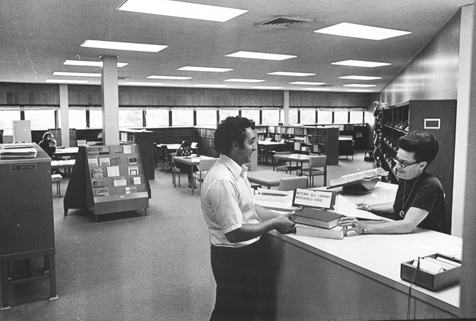
Faculty Research 1970 - 1979
Cell lines from old immunodeficient donors give normal responses in young recipients.
Document Type
Article
Publication Date
1977
Keywords
Animal, Cell-Line, Comparative-Study, Erythrocytes: im, Female, Hematopoietic-Stem-Cells: im, tr, Immunity, Immunosuppression, Lectins, Male, Mice, Mice-Inbred-CBA, Radiation-Chimera, SUPPORT-U-S-GOVT-P-H-S, Transplantation-Isogeneic
First Page
1223
Last Page
1227
JAX Source
J-Immunol. 1977 Apr; 118(4):1223-7.
Abstract
Two different immune responses were compared in spleen cells obtained from old and young CBA/HT6J mice. Spleen cells from old mice (23 to 33 months) responded about half as well as did spleen cells from young mice (4 to 10 months) in the adoptive transfer anti-sheep red blood cell (SRBC) plague-forming assay, and caused slightly less than half the uptake of tritiated thymidine in response to phytohemagglutinin (PHA) in vitro. Marrow stem cell from some of the old and young mice whose splenic immune responses were tested were transplanted into irradiated young CBA/CaJ recipients. Seven to 17 weeks later these same immune responses were tested in the spleen cells of these young recipients, and the T6 chromosome marker was used to identify donor cells. Old animals' responses varied greatly, perhaps due to suppressing cells or factors in some individuals. Therefore, cells were never pooled and the responses of receipients were compared to the responses of the donor whose marrow had populated them. The response for a particular old donor, or for the recipients of its stem cells, was divided by the response for the young control used with that donor, or for its stem cell recipients. This was called the old/young ratio. With original donors with an old/young ratio for the SRBC response of (mean +/- S.D.) 0.35 +/- 0.14, The old/young ratio for that same response in the recipients was significantly improved to 1.26 +/- 0.71. In original donors with an old/young ratio for the PHA response of 0.44 +/- 0.17, the old/young ratio in the recipients improved significantly to 0.86 +/- 0.27. Thus, little or none of the decline with age in these immune responses was intrinsic to the old lymphoid stem cells.
Recommended Citation
Harrison DE,
Astle CM,
Doubleday JW.
Cell lines from old immunodeficient donors give normal responses in young recipients. J-Immunol. 1977 Apr; 118(4):1223-7.

